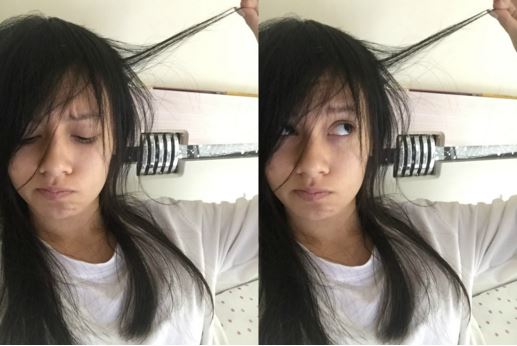Table Of Content
- Causes of trichotillomania
- What can I expect if I have this condition?
- How to talk to a friend about trichotillomania
- Eye symptoms commonly seen in multiple sclerosis
- Therapy focused on emotional regulation
- How to help someone with trichotillomania
- Types of Hair Most Often Pulled Out in Order of Frequency

While research has provided some evidence of this, the reason behind it is still a mystery. Those affected may try to keep their condition to themselves. For example, you might focus on using a fidget toy or stress ball instead of pulling your hair.
Causes of trichotillomania
Nantidepressants) may help, particularly if the person also has symptoms of depression or anxiety. Hair pulling typically begins just before or after puberty. Among adults, hair-pulling disorder is more common in females. People with this disorder compulsively pull or pluck out their hair for noncosmetic reasons. That is, they do not pull hair out to improve their appearance.
What can I expect if I have this condition?
Other people pull their hair automatically without thinking about it. Trichotillomania can cause physical damage to skin tissue that may lead to infection, especially if tweezers, scissors, or other sharp objects are used to help facilitate hair pulling. The repetitive motions involved may also, in some cases, trigger joint injury or muscle pain. Although far more women than men are treated for trichotillomania, this may be because women are more likely to seek medical advice. In early childhood, trichotillomania occurs just as often in boys and girls.
How to talk to a friend about trichotillomania
Many wear wigs to hide their damaged hair and balding spots. There are also members who post videos for make up tips and tricks (for the brow/lash pullers). I’m happy the younger generations will be able to connect with other trichsters, so they don’t feel alone like I did growing up. Patient X, 18 year-old Caucasian female was previously diagnosed with OCD, PTSD, and Trichotillomania and presented a history of sexual trauma.
At first you may see your primary care provider or a specialist in skin disorders called a dermatologist. Your provider may refer you to a mental health professional with experience in diagnosing and treating trichotillomania. Trichotillomania is classified under the category of "related disorders" in the Diagnostic and Statistical Manual of Mental Disorders, 5th Edition (DSM-5). In some cases, a “punch biopsy” (where your healthcare provider takes a skin sample for lab analysis) is necessary to confirm a diagnosis of TTM. This test can also rule out other skin conditions that might be the true cause of hair loss or hair pulling. Research into treatments for BFRBs, particularly hair pulling and skin picking, has grown steadily over the past decade.
They also learn to identify the factors that lead to hair-pulling as well as the repercussions of the behavior. The overall outlook for this condition depends partly on the age of the person who has it. Infants and children with TTM often have the best outlook, with the condition commonly going away on its own. Healthcare providers may use combinations of medications, therapy techniques or both. Diagnosing TTM involves a combination of a physical exam, where your healthcare provider looks for visible signs of the condition. They'll also ask questions about your health history, current circumstances and anything else that might have a connection to a medical problem.
Sometimes pulling out hairs from pets or dolls or from materials, such as clothes or blankets, may be a sign. Interrupting the hair pulling process can often be intrusive and it feels like a huge invasion of privacy. Imagine being engulfed in an intense work project and someone comes to interrupt you, and it jerks you out of focus. It doesn’t matter that we want to stop, because pulling gives us some kind of pleasure that is hard to break away from or out of. The two methods of treatment that have been scientifically researched and found to be effective are behavioral therapy and medications, which are generally used in combination. While the scalp is the most common area for hair pulling, the eyelashes, eyebrows and other facial hair can also be affected.
Amy Schumer Opens Up About Having Trichotillomania, a Hair-Pulling Disorder - Glamour
Amy Schumer Opens Up About Having Trichotillomania, a Hair-Pulling Disorder.
Posted: Fri, 25 Mar 2022 07:00:00 GMT [source]

And in one revealing moment, that misplaced pride was crushed. I spent the next few months covering my head with bandanas and hats in shame. At first, I spent a lot of time leaving the hair in my head, and pulling apart the split ends.
Common Side Effects Of Cheek Biting
'I pluck the hair from my scalp like a trophy': Living with trichotillomania - The Independent
'I pluck the hair from my scalp like a trophy': Living with trichotillomania.
Posted: Sat, 26 Mar 2022 07:00:00 GMT [source]
Your mental health professional can help you figure out if you have OCD or an anxiety disorder and include helping you feel better in your treatment plan. Like the urge to pull for people with trichotillomania, they can be very hard or impossible to ignore. Hairpulling sometimes helps people feel in control of unpleasant physical sensations. In the process, they end up pulling out more eyelashes or get in the habit of pulling.
There are many ways to manage it with therapy and medication. ADHD is a mental health condition that affects focus, attention, activity, and concentration. While ADHD is not an impulse control disorder like trichotillomania, it can cause problems with impulse control.
For people with trichotillomania, that may include an overwhelming urge to pull out your own hair. Over time, repeatedly pulling hair out can lead to bald spots and even more emotional distress. Trichotillomania is a condition characterized by a compulsive urge to pull out one’s hair. The most common age of onset is in preadolescents to young adults. On average, it is typically between 9 and 13 years, with a peak between 12 and 13 years.

This drug is used to treat certain serious mental health conditions that affect the mind. While hair-pulling disorder cannot be cured, it can be managed with therapy. Even though hair-pulling disorder is classified as an obsessive-compulsive disorder, it is treated differently.
In addition, a recent study examined hair pulling in both identical and fraternal twins and produced results consistent with a significant inherited component in hair pulling disorder. So we can safely say that BFRBs are more than likely inherited, at least to some degree. The effects of trichotillomania also depend on the age at which it happens. Children commonly pull their hair in this way, but that behavior is often a self-soothing act. Children often grow out of this behavior and don’t have any long-term negative effects.
These obsessions lead to compulsions, which are actions that you can't stop yourself from doing over and over. People with OCD often feel anxiety or fear about their obsessions. For example, someone might worry obsessively about things being out of order and feel a compulsion to arrange their things in a certain order. The skin near your eyebrows is sensitive and can easily get hurt from pulling.
The disorder is usually chronic and lifelong, but its severity may ebb and flow with time. This consists of compulsive urges to pull one’s hair resulting in noticeable hair loss. Hair-pulling can be any part of the body like arms, pubic hair, eye lashing, legs, etc. There are times when pulling occurs in a goal-directed manner and also in an automatic manner in which the individual is less aware. Many individuals report noticeable sensations before, during, and after pulling.
Therapy is considered the front-line treatment for all BFRBs, including trich. Other kinds of therapy such as ACT and dialectical behavioral therapy (DBT) have also shown promise, especially when combined with HRT. As an aside, I want to encourage others to not make snap judgements about others. Depression also frequently occurs in individuals with this illness, along with excoriation (skin-picking) disorder. Other body-focused repetitive behaviors, such as nail biting, thumb sucking, head banging, or compulsive scratching are also common.
No comments:
Post a Comment